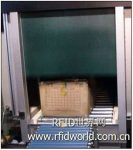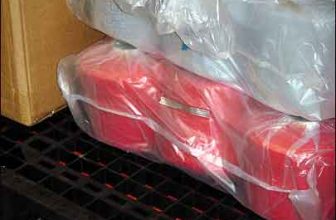
South Korean clothing company Basic House adopts RFID system in its supply chain
[ad_1]
The Basic House, a South Korean clothing company, began testing and adopting an RFID system in manufacturing plants, distribution centers and stores, hoping to improve efficiency and reduce stock-outs. This system will be officially launched and run next month. The RFID system helps companies better predict and plan the manufacturing and delivery of garments based on more accurate inventory counts, said Daan Jang, general manager of The Basic House. Moreover, Daan also believes that this system can help reduce stock-outs in the company’s stores.
This system uses Minerva’s handheld and door readers, UPM Raflatac’s EPC Gen 2 UHF DogBone RFID tags (applied to clothing and cargo boxes).
The Basic House produces four brands of clothing, which are sold in its brand stores or other retail department stores. The company hopes to gradually use RFID to track all clothing, which is currently only applied to two clothing brands: Mind Bridge and The Class. Mind Bridge has 86 specialty stores in South Korea and The Class has 73 specialty stores. Starting this year, all clothing of these two brands will use handhelds to read and count RFID tags when they are shipped from the distribution center.
The company’s manufacturing plant began to label approximately 2 million pieces of clothing from these two brands, and will continue to label these two brands of clothing in the future. By 2011, the total number of labels for The Basic House clothing and boxes will reach 10 million. In order to track these garments, the company designed its own RFID printing and encoding system-RFID Automatic Encoding Machine (RAEM)-and designed an RF shield for the reader to reduce tag reading. Korea Trade Network (KTNET), a South Korean automation service company, provides RFID number compiling software, matching them with the company’s existing inventory management system.
RAEM contains a Minerva RFID reader. Factory workers use RAEM to encode and print RFID labels, and test the RFID inlays embedded in the labels. If the tag cannot be read normally, RAEM will stop running and notify the staff. In this way, Jang said, the possibility of non-readable labels is almost eliminated.

The Basic House designs and installs RFID protective screens to prevent reading of neighboring tags
The Chinese manufacturing plant of The Basic House uses RAEM to write unique ID codes to tags at a rate of one tag every 1.6 seconds. After the label is encoded, printed and read, it is pasted on the tag of each piece of clothing. The label ID code corresponds to the brand, production time, season, style, color and size of the item in the company’s back-end system.
When ready to ship, the worker sticks an RFID tag on the box and then reads the tag. The Basic House has also established an RFID protective door through which the packaged items enter and exit the factory warehouse. The shield narrows the reading area of the RFID reader, thereby preventing the reading of nearby tags and making the system more stable.
The software provided by KTNET receives and compiles the data from the reader through a cable connection, and then integrates with The Basic House indoor software system to generate a list of items in the box and the destination information of the box.
When the box is packaged and labeled, the label is read, and the data is sent to the KTNET software via a cable connection, which sends an invoice to one of The Basic House’s two distribution centers in Busan. When the clothing arrives at the distribution center, it is read again by a door reader and compared with the invoice. The items are stored in the distribution center, and the workers use the handheld to read the inventory again. When the garment is shipped from the distribution center, the destination store will receive an advance invoice.
In this month, when the goods arrive from the distribution center, store employees will use a handheld to read the tags and take inventory at the store. At any point in the supply chain, if there is a discrepancy, such as the number of tags in the box or the tag ID code, the system will trigger an alarm.
“We are very convinced that this system can shorten the delivery and delivery time, increase productivity and the company’s competitiveness. On the other hand, stores also reduce stock outs and improve customer service,” Jang said.
The company plans to further apply this system to the other two brands and install RFID self-checkout counters and RFID/EOS security systems in stores.
[ad_2]




